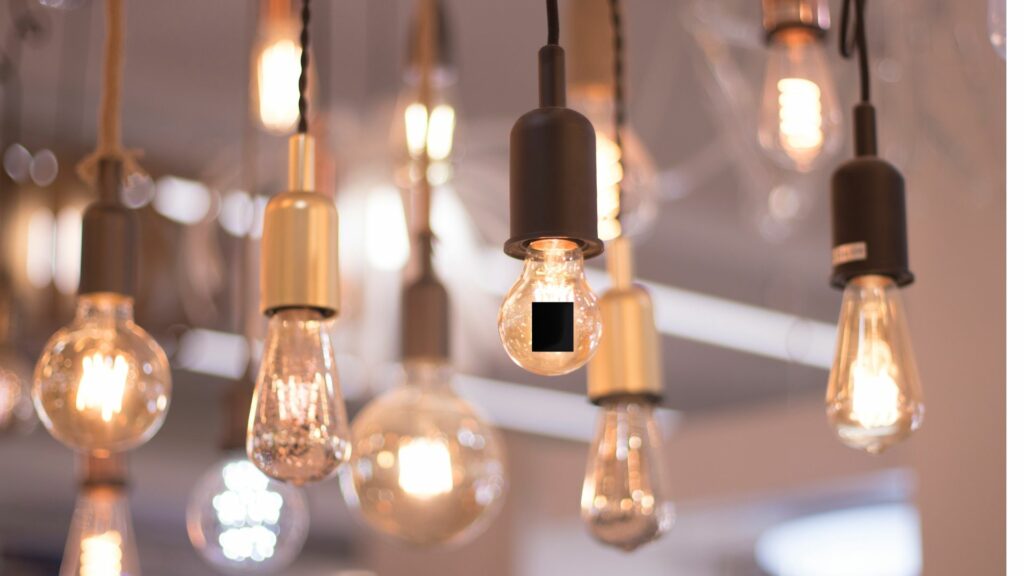People use electrical tape to reduce the light’s intensity. LEDs are sophisticated. And in many cases, you can dim them to fit your needs. But what about LED lights on electronic devices? Some people struggle to sleep at night because the LEDs on the GFCIs in their bedrooms are too bright.
The situation becomes even worse when the LEDs in question start blinking. Electrical tape can solve this problem because it comes in dark colors. It can either block the lights or reduce their intensity.
Additionally, consumers use electrical tape to cover damaged sections of an LED light. This is a temporary measure. You can also connect multiple LED light strips together with electrical tape.
Electrical tape is a versatile tool that does a bit of everything. In the process of repairing, dimming, or binding LEDs, you may cover the lights. This practice concerns some people because of the following factors:
1). Overheating
When you ask people whether covering an LED light with electrical tape is safe, they immediately mention overheating. Electrical tape is an insulating tool, and in the wrong setting, it can start a fire by trapping heat.
However, you can’t apply that rationale to LEDs. Wrapping an incandescent bulb with electrical tape is problematic because incandescent bulbs are extremely inefficient.
A 100W incandescent bulb will use 10 watts to make light.

The other 90 watts become heat, which is wasteful. This is why incandescent bulbs are hot to the touch. Dimming them with any flammable material is guaranteed to start a fire.
LEDs are different. Anna Andonova, Namyong Kim, and Nikolay Vakrilov (Plovdiv University) performed a study exploring the amount of heat LEDs generate under different circumstances. Their paper (published in Elektronika ir Elektrotechnika) noted that LEDs are not 100 percent efficient.
They don’t convert every watt into light energy. That being said, you’re still looking at eight watts of light and only two watts of heat from a 10W bulb. This is why LEDs are cool to the touch. You can’t cause overheating by wrapping an LED light in electrical tape.
While the light can generate noticeable heat after running for an extended period, it won’t produce enough warmth to start a fire.
2). Nullify The Warranty
Putting tape on an LED light can reduce the bulb’s lifespan in the long run, especially if you cause the LED chip to overheat by blocking the airflow. You may also nullify the warranty in the process.
You can put your mind at ease by consulting the manufacturer or reading the terms and conditions on their website. If you don’t care about the warranty, you can proceed. At the end of the day, the tape won’t harm the LED light.
How To Properly Cover LED Lights With Electrical Tape?
1). Clean the surface. Don’t apply the tape to a dirty light. Dirt and debris will compromise the tape’s grip, causing it to fall away. Use a cloth to remove dirt, grime, and debris to enhance the tape’s grip.
2). Dry the surface. Like dirt and debris, moisture prevents the tape from adhering securely to the light.
3). You can apply multiple layers or pieces to make the tape’s grip firm and secure.
4). Stretch the tape as you apply it. But don’t stretch it so much that the tape breaks. You should also rub the tape into the light’s surface to strengthen its grip.
What Electrical Tape Should I Use?
Standard tape is sufficient. Electrical tape comes in various types, and each type has a different set of attributes. For instance, PTFE tape has decent chemical resistance. Cloth tape is strong and flexible.
Vulcanized rubber tape can survive in rugged conditions. That includes manufacturing plants and construction sites. Polyimide tape is perfect for electronics because of its high-temperature stability. The list is endless.
You should match the conditions the LED light encounters to the electrical tape. You don’t want a tape that deteriorates and falls off after a few days because it can’t withstand the extreme elements in the environment.
However, standard electrical tape can tolerate most conditions that house LED lights. Corrosive elements that threaten the integrity of standard tape will also harm the lights. The chances that your LED will require a distinct type of electrical tape are low.
Consult a professional for additional guidance. A technician can analyze the environmental conditions before selecting a suitable type of electrical tape.
When Should You Not Use Electrical Tape Over LED Lights?
You can apply electrical tape to LED lights in most instances and scenarios. However, you should keep the following challenges and precautions in mind:
1). Where is the LED light located?
You can apply electrical tape to an independent LED without attracting negative consequences. Problems arise when you apply electrical tape to an LED light on an electronic device.
The tape may harm the device. For instance, it can disrupt the blades on a fan if the tape’s edges are too long. It can also cause overheating in an outlet if you wrap the tape all over the receptacle’s external shell.
Does this mean independent LEDs are completely safe? Not necessarily. Even though LEDs don’t overheat, you can create complications by wrapping the tape around the heat sink. Try to limit the tape to the light itself. Stay away from the device surrounding the light.
2). Don’t forget that electrical tape leaves residue behind
This sticky substance may become an annoyance. Think twice about using electrical tape if the residue bothers you. It can discolor the LED light.
3). Damage
Electrical tape may cause mild damage, especially if you struggle to peel it off. The tape may damage the light’s plastic casing. Some people make things worse by using hair dryers and heat guns on stubborn strips of electrical tape.
Talk to a technician before you take such drastic actions. They will determine whether or not the hair dryer or heat gun will harm the light’s casing. They can also offer a safer alternative.
4). You can’t use the electrical tape in places where the appearance of the LED lights matters.
No one cares what LEDs in your bedroom look like. But the same cannot be said for LED lights at an event or in a public setting.
The LEDs will highlight standard electrical tape’s unsightly design. Keep this in mind before you use it. Again, it helps to consult a technician because they can recommend a more professional alternative, especially if you want to dim the LEDs without drawing attention to them.
Safety Tips Before Masking Tape Over LED Lights
- Don’t cover the heat sink. Blocking the heat sink can lead to overheating.
- Clean the LED light’s surface before applying the tape.
- Dry the LED light’s surface.
- If you’re not trying to reduce the light’s intensity, place the tape in places where people are less likely to see it.
- Apply multiple pieces and layers of tape. Otherwise, the tape may fall off.
- Remove the tape slowly if you don’t want to leave unsightly marks.
- Don’t use the tape as a permanent solution. It can serve your needs in an emergency. However, you should find a more efficient answer to your problem down the line.
- Don’t place the tape over the chip.
- Find a type whose attributes match the conditions the tape will face. For instance, if the LEDs are outside, use an electrical tape capable of withstanding the heat and rain your area typically encounters. High temperatures and moisture can cause the standard electrical tape to lose its grip.
- If you don’t have electrical tape, use clear scotch tape. You can paint it with a marker to obscure the light if you’re objective is to reduce the LED’s intensity.
- One-Good-Thing-By-Jillee warns against using fabrics to cover LEDs. Even though the fabric can successfully block light, it will trap the heat, especially if the LEDs are attached to an electronic device. Eventually, the fabric will ignite, starting a fire.
Related post:

